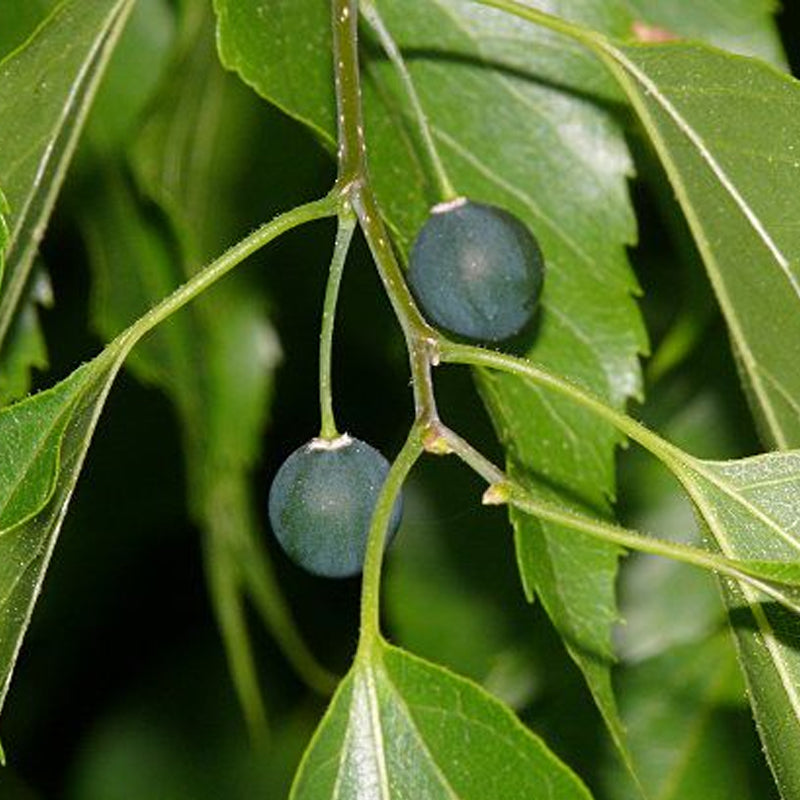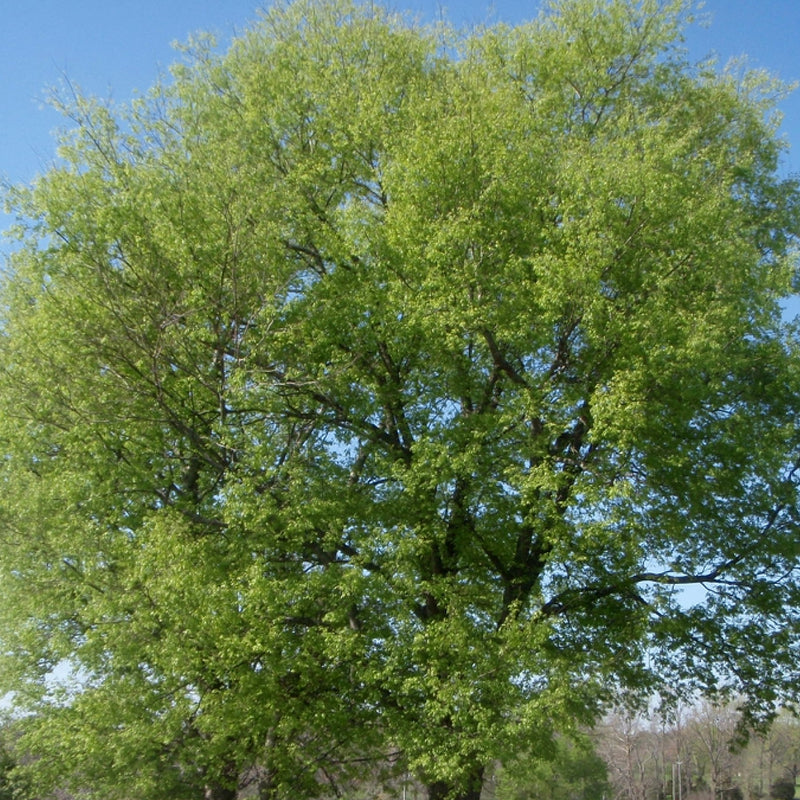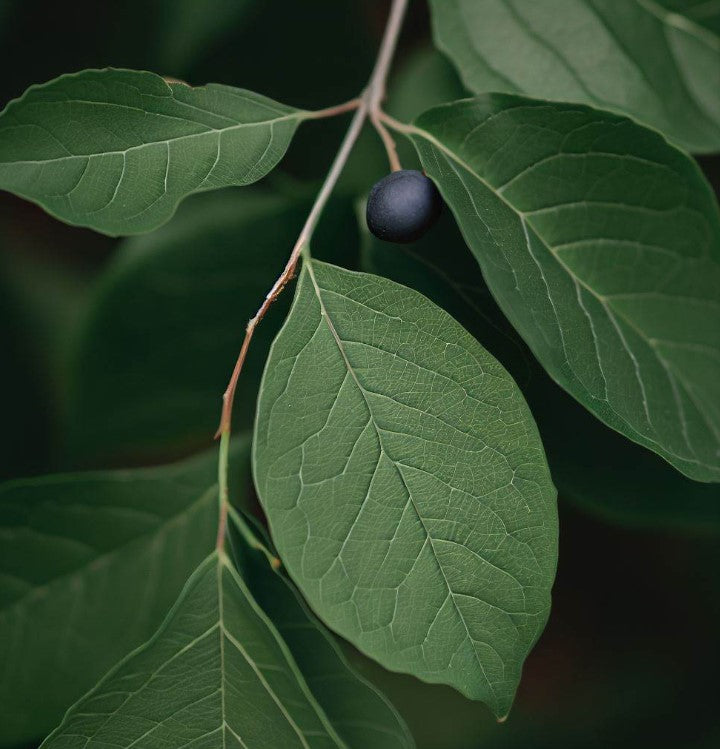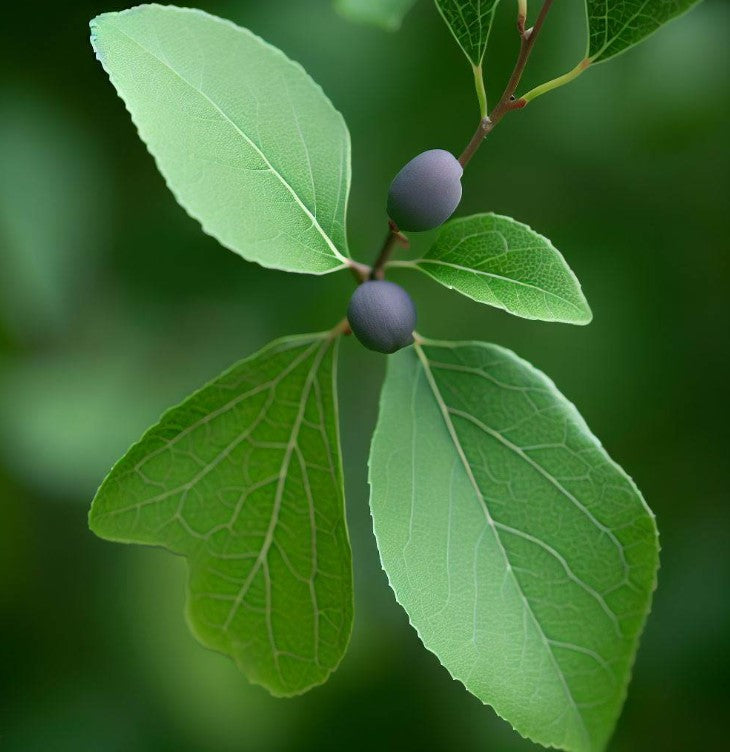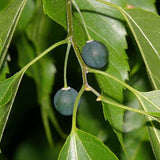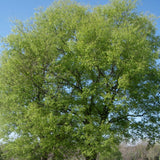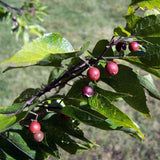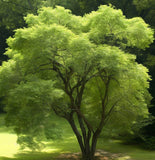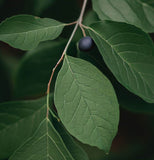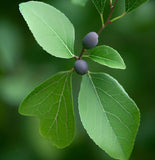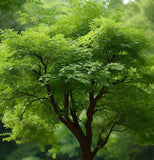Celtis laevigata (Sugarberry)
Celtis laevigata (Sugarberry) is a deciduous tree native to North America. The Sugarberry tree is a medium to large-sized tree that can reach heights of 60 to 80 feet (18 to 24 meters) or more. It has an oval to rounded crown and a straight trunk. The bark is grayish-brown and often covered with wart-like bumps. The leaves are simple, alternate, and have a serrated edge. They are typically dark green and have a rough texture. In the fall, the leaves turn yellow.
Flowers and Fruits: The Sugarberry tree produces small, inconspicuous flowers that are greenish-yellow in color. The flowers are followed by small, round fruits that resemble small berries. The fruits mature to a dark purple or black color and are about ¼ to ⅓ inch (6 to 8 millimeters) in diameter. They are sweet and edible, hence the common name "Sugarberry." The fruits are a food source for birds and wildlife.
Habitat and Range: The Sugarberry tree is native to North America and is found in various habitats, including bottomlands, floodplains, and along riverbanks. It is well-adapted to moist soils but can also tolerate drier conditions. The tree is distributed across the southeastern and central parts of the United States.
Uses: The wood of the Sugarberry tree is not highly valued for its timber, but the tree has several other uses. It is often planted as an ornamental tree in landscapes and along streets for its shade and attractive appearance. The fruits, though small, are sweet and can be eaten raw or used in jams and jellies. Native American tribes have used the inner bark and roots of the tree for medicinal purposes.
Ecological Importance: The Sugarberry tree plays a significant role in supporting biodiversity. Its fruits are a valuable food source for birds, including songbirds, as well as small mammals. The tree also provides shelter and nesting sites for birds and serves as a host plant for several butterfly and moth species.
Resilience: The Sugarberry tree is known for its resilience and adaptability. It can tolerate a wide range of soil conditions, including poorly drained soils and clay. It is also tolerant of urban environments and pollution.
Conservation: The Sugarberry tree is not currently listed as a threatened or endangered species. However, like many tree species, its natural habitats are being impacted by habitat loss and other human activities. Conserving natural areas and planting Sugarberry trees can help maintain their populations and provide important ecological benefits.
Botanical Name : Celtis laevigata
Common Name : Sugarberry
Height : 50- 70 ft
Spread : 50- 60ft
Germination Info : Seed requires 60-90 days cold stratification.
Hardiness zone : 5-9
Average seed per ounce : Approx. 625

